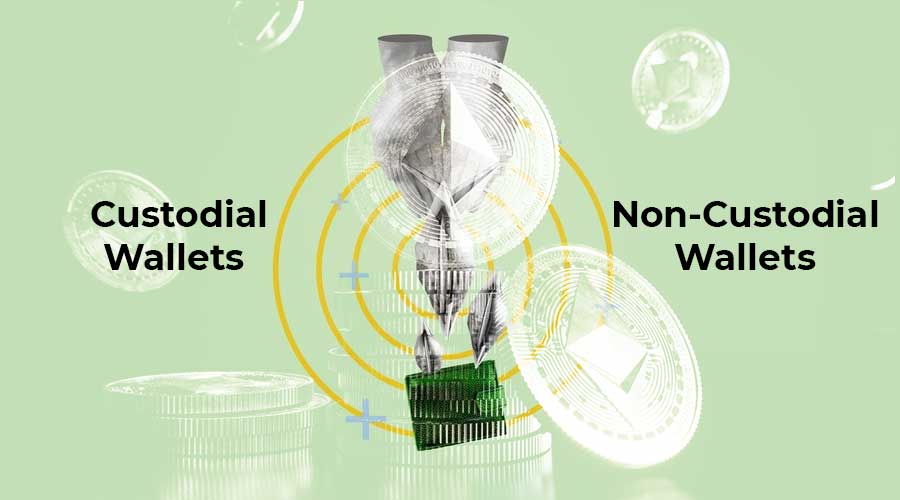 Learn how custodial and non-custodial wallets differ
Learn how custodial and non-custodial wallets differ
When it comes to holding cryptocurrency, choosing the right form of wallet for securing and keeping digital assets is essential. Wallets come in a wide variety of styles, making it difficult to decide which one to buy.
It’s crucial first to grasp how crypto wallets operate to comprehend how a custodial wallet functions. A user’s money is not truly stored in a cryptocurrency wallet. Instead, they own both the private and public keys, which are used to authorize and set up transactions, respectively. In a custodial wallet, as the name implies, users’ private keys are kept safe by a third party on their behalf. The third party is in complete control of the user’s crypto assets and manages their wallet key, signs transactions, and keeps their crypto assets safe.
Custodial wallets are often offered by cryptocurrency exchanges or a custodial wallet provider as a web or mobile app. Users utilize the interface provided by the wallet provider to manage their funds and carry out transactions after logging into their wallet account. Users must thus have faith that the service provider will retain their tokens safely and implement robust security measures to thwart unauthorized access. Some security procedures include two-factor authentication (2FA), email confirmation, and biometric identification, such as fingerprint or face recognition.
The cryptocurrency owner is entirely responsible for their money in a non-custodial wallet, also known as a self-custody wallet. The user controls their private key, executes transactions, and ultimately controls their crypto assets. Non-custodial wallets come in a variety of shapes and sizes. A browser extension, browser-based wallets enable users to enter their private key and start transactions.
Downloadable mobile applications are how mobile wallets work. Hardware wallets, on the other hand, are tangible objects. Many people believe hardware wallets to be the most secure solution since they can be accessed and controlled offline. The users of non-custodial wallets receive a seed phrase. Users will be required to write down and save a group of 12 randomly generated words known as a “recovery,” “seed,” or “mnemonic” phrase after establishing the wallet. The public and private keys may be produced from this sentence. If users lose access to their primary device, it also serves as a backup or recovery option. The money in a user’s wallet will be completely in their hands if they have the seed word. The user can only access their money if the seed phrase is recovered. Each transaction must be managed and completed by the user. Users require their private keys to transmit money and carry out other transactions. The transaction can be signed offline and uploaded to the blockchain for confirmation later, depending on the utilized non-custodial wallet.
The main drawback of custodial wallets is entraining a third party with your money and private keys. These service providers typically need identity verification (KYC) as well. But convenience and mental calm are advantages. You won’t have to worry about misplacing your private key; you can contact customer service if you experience any issues. Select a reputable business with excellent security and insurance coverage when employing custodial services. Keep an eye out for regulated and compliant custodians. You might need to meet additional standards for some crypto custodians. For instance, Ceffu is a supplier of custodial services that currently exclusively onboard business users.
Non-custodial wallets control your keys and money without needing a third-party guardian. In other words, you may act as your bank, and your assets are yours. Additionally, since you don’t have to wait for withdrawal clearance, non-custodial transactions frequently happen more quickly. Last but not least, if you don’t use a custodian, you won’t pay additional custodial costs, which may be expensive depending on the service provider you pick. As we’ve seen, accessibility and usability are two drawbacks of utilizing non-custodial wallets. They typically cause issues for new cryptocurrency owners and are less user-friendly. This should be remedied in the future when non-custodial service providers develop. Naturally, you are solely responsible for your keys and must use your prudence when handling them. This indicates that you must trust yourself to manage your finances rather than put your confidence in others.




